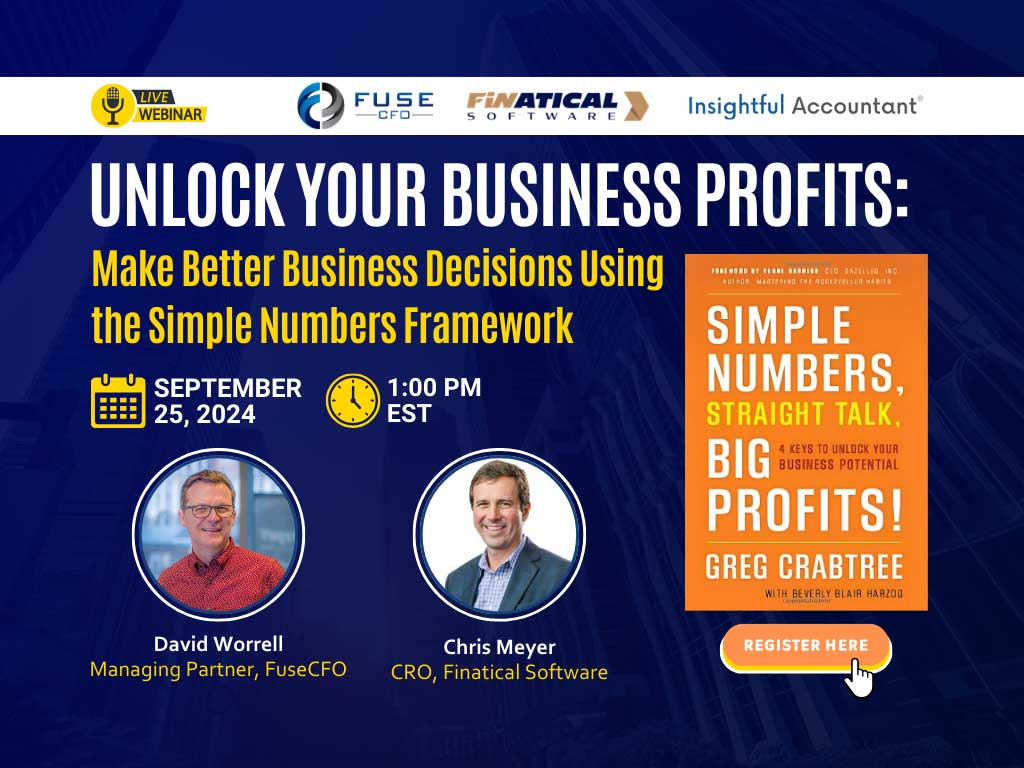
Forecasting The Future: How Small Businesses Can Build A Powerful Predictive Financial Model

Predicting your future financial performance is invaluable but a major challenge for many small businesses. Start by building a simple yet powerful spreadsheet model for revenues, expenses, and cash flow.
Even a simple model can be a strategic advantage and essential for making great decisions. Here are some ideas for the tools you can use, and how to work with a Fractional CFO to create a flexible model that allows you to play ‘What-If’ games and make informed decisions for growth.
Why Bother?
Imagine that you need to decide whether to hire new talent, expand your office space, or invest in new technology. These decisions hinge on their financial impact and your company’s ability to afford them in the future. How can you be sure you’ll make the right choice?
A predictive model that considers key variables and KPIs can give you clarity and confidence to allocate resources for growth and stability.
Basics of Building a Predictive Financial Model
You don’t need an overly complex system. Any small business can chart its financial future with tools as accessible as Excel or Google Sheets. The key is to ground your financial model in historical data, ensuring it reflects the reality of your business’s past performance. This is your foundation for future predictions.
Key Components
What drives your business? These variables have the most significant impact on your revenue and expenses. Identifying these drivers requires an understanding of your business’s operations and market. Incorporating scenario analysis into your model allows you to prepare for various possibilities. It gives you the agility to respond to internal and external changes confidently.
Advanced Tools Beyond Spreadsheets
Advanced software options like PlanGuru, Fathom, and Float offer sophisticated features for businesses ready to move beyond the basics of the financial model. Leverage these tools to provide insights that make your strategic decisions more manageable.
- PlanGuru includes tools for income statements, balance sheets, and cash flow statements. It can integrate more than 20 forecasting methods. PlanGuru allows you to create custom financial analyses and reports. Additionally, it supports scenario planning and what-if analysis. You can use it to explore different financial outcomes based on varying assumptions.
- Fathom: Fathom gives you access to dashboards and performance metrics that can be customized to suit different stakeholders. Fathom is excellent for consolidating data from multiple sources, making it ideal for businesses with several entities. It also supports benchmarking, trend analysis, and goal-setting, facilitating strategic planning and decision-making.
- Float: Float provides detailed cash flow forecasting, allowing users to see what their daily, weekly, and monthly cash positions are. It enables scenario planning, where users can test different financial assumptions and see their potential impact on cash flow. It also includes budgeting features, which can help you track spending against forecasts.
Working with a Fractional CFO
For small businesses, having the added support of a Fractional CFO is transformative. These part-time financial strategists refine your financial model, offer insights, and guide your company through complex financial decisions. Their experience and knowledge can differentiate between a good and a great model.
Using the Model for Strategic Decisions
A predictive financial model is not just a planning tool; it’s a strategic asset. It can indicate the most opportune moments for investments, hiring, and expansion. You can steer your business towards sustainable growth by aligning your business strategy with the insights derived from your model.
Regular Review and Adaptation
The only constant in business is change. Your predictive financial model should be a living document, regularly updated to reflect new data and market trends. This adaptability ensures that your model remains a reliable tool for decision-making.
A well-constructed financial model is a powerful tool for any small business. It provides clarity, supports strategic decision-making, and helps identify the optimal timing for investments and growth.
You can navigate your business toward success by focusing on key drivers, integrating with tools like QuickBooks Online, and regularly updating your model. To continue this conversation with us, contact FuseCFO to schedule a free business analysis.


